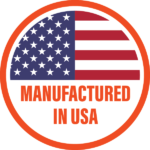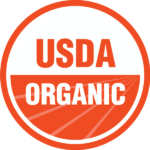
Origin: Cold-pressed irish moss combined with glycerin and water.
Also Known As: Chondrus Crispus extract
Overview Description
Irish Sea moss(Chondrus crispus) or (carrageen) is a red seaweed, (typically a dark/red purple color), that grows year-round but only harvested in the summertime in the colder waters off the coast of Maine, Canada and Ireland off of the rocks near the shore lines.
Irish Sea Moss is mainly composed of carrageenan, a gelatinous carbohydrate. The word carageen means Little rock in Ireland. The Chinese used carrageenan algae for similar purposes dating back to 600 B.C.
There is some confusion between Irish Sea Moss and Jamaican Sea moss, also known as Gracilaria. This is mainly due to the similarity in color.
Irish Sea Moss also has a more potent smell to it while the Jamaican Sea Moss is mild.
Because the demand has risen certain companies have been trying to produce pool-grown sea moss which is not considered Ideal because they lack nutrients that can only be found in oceanic environments.
So when you are purchasing your products make sure it was harvested naturally.
There is a study published called “The Variation in Lipid Components from 15 Species of Tropical and Temperate Seaweeds”
https://pubmed.ncbi.nlm.nih.gov/31698797/
This study showed that cold water seaweeds contain more total lipids and heart healthy omega-3 fatty acids than tropical warm water seaweeds.
This is the main distinguisher of why you want the Irish Sea Moss versus the Jamaican Sea Moss.
Benefits and Uses
Immunity booster – as it contains several forms of iodide as well as antioxidants, antivirals, and antimicrobial agents.
Can Help thyroid function – Sea moss boasts of various iodine compounds that the thyroid needs to stay healthy. It is a source of DI-Iodothyronine, which can help treat thyroid disorders.
The iodine sources can assist in the metabolism of hormones that regulate energy, digestion, and more.
It may help protect cells in the brain. There is Some research that has shown brain-protective action, particularly from degeneration and Parkinson’s.
Possibly help with digestion. Animal studies have shown that it can have a prebiotic effect and can therefore increase beneficial short-chain fatty acids present in the colon.
Irish Sea moss has the potential to get rid of bad bacteria and enhance overall gut wellness.
Good source of Folate and Riboflavin. Sea moss contains riboflavin and folate, two major B vitamins. Which break down proteins, fats, and carbs, while folate is necessary to form DNA as well as other genetic materials.
It is a possible skin nourisher and beauty agent that has shown the ability to soothe eczema, psoriasis, burns, and other common skin disorders by aiding in cell growth, regeneration and collagen production.
Forms and Sources
Can be used as a gel, powder, oral capsule, tablet or gummy.
Side Effects and Interactions
It may cause fever, nausea, vomiting, and diarrhea, as well as a burning sensation in the mouth, throat, and stomach.
Irish Sea Moss has some bilirubin in which massive consumption of sea moss could potentially cause jaundice.
How to Label
Irish Sea Moss (Chondrus crispus) (whole plant)
Research & Studies (References)
Neuroprotective Effects of the Cultivated Chondrus crispus in a C. elegans Model of Parkinson’s Disease
https://www.ncbi.nlm.nih.gov/pmc/articles/PMC4413210/
A Cultivated Form of a Red Seaweed (Chondrus crispus), Suppresses β-Amyloid-Induced Paralysis in Caenorhabditis elegans
https://pubmed.ncbi.nlm.nih.gov/26492254/
The effect of Red Seaweed (Chondrus crispus) on the fertility of male albino rats
https://www.ncbi.nlm.nih.gov/pmc/articles/PMC8241699/
Assessment of the effects of sulfated polysaccharides extracted from the red seaweed Irish moss Chondrus crispus on the immune-stimulant activity in mussels Mytilus spp
https://pubmed.ncbi.nlm.nih.gov/29438847/
Risk assessment of iodine intake from the consumption of red seaweeds (Palmaria palmata and Chondrus crispus)
https://pubmed.ncbi.nlm.nih.gov/32803579/
Components of the cultivated red seaweed Chondrus crispus enhance the immune response of Caenorhabditis elegans to Pseudomonas aeruginosa through the pmk-1, daf-2/daf-16, and skn-1 pathways
https://pubmed.ncbi.nlm.nih.gov/24056462/
Nutraceuticals for Healthy Skin Aging
Elaine Cristina Faria Abrahão Machado, … Adilson Costa, in Nutrition and Functional Foods for Healthy Aging, 2017
Citrulline–Arginine
Citrulline–arginine is a component of marine biomass originating from a red algae, Chondrus crispus, which is found along the shores of the northern Atlantic Ocean. It is a stable dipeptide that improves the bioavailability of the arginine by increasing skin energy levels, encouraging cell growth and metabolism, and protecting the skin. In addition, it releases arginine and citrulline, amino acids that are important sources of nitrogen and essential for protein and collagen synthesis (Bidri and Choay, 2003).
Citrulline-arginine is indicated for the prevention and improvement of skin aging. It acts as a skin protector in extreme conditions such as cold and dry climates, pollution, and air conditioning. It also aids wound healing. The recommended dose is 100–1000 mg per day
https://www.sciencedirect.com/science/article/pii/B978012805376800023X
Enzyme-Assisted Extraction of Bioactive Material from Chondrus crispus and Codium fragile and Its Effect on Herpes simplex Virus (HSV-1)
https://www.ncbi.nlm.nih.gov/pmc/articles/PMC4306952/
Red Seaweeds Sarcodiotheca gaudichaudii and Chondrus crispus down Regulate Virulence Factors of Salmonella Enteritidis and Induce Immune Responses in Caenorhabditis elegans
https://www.ncbi.nlm.nih.gov/pmc/articles/PMC4814495/
Prebiotic effects of diet supplemented with the cultivated red seaweed Chondrus crispus or with fructo-oligo-saccharide on host immunity, colonic microbiota and gut microbial metabolites
https://www.ncbi.nlm.nih.gov/pmc/articles/PMC4535385/
Feed supplementation with red seaweeds, Chondrus crispus and Sarcodiotheca gaudichaudii, affects performance, egg quality, and gut microbiota of layer hens













